18 Jun – 22 Aug 2021
Belkin Outdoor Screen
Outdoor Screen: Image Bank
-
Glenn Lewis
ArtistGlenn Lewis (Canadian, b. 1935) is a contemporary conceptual artist based in Vancouver. Lewis became a central figure within Vancouver’s prolific avant-garde art scene of the late 1960s. Initially trained in ceramics, his practice expanded to include photography, sculpture, performance and video, and is often grounded in collaborative projects or approaches. Lewis’s work questions the dualities of the social and the natural, the conventional and the mythical, as well as the static and the transient, often ironically. In 1967, Lewis was prominent in Intermedia, a loose collective of artists, musicians, dancers, architects, engineers and educators who came together to explore new forms of artistic expression and equipment, influenced in part by the ideas of Marshall McLuhan, Buckminster Fuller, the back-to-the-land movement, performance and conceptual art. Lewis was first inspired to take up performance art himself after attending workshops with choreographers and dancers Deborah Hay and Steve Paxton at the Vancouver Art Gallery in 1968, and the following year participating in a performance tour with his piece Canadian Pacific and Yvonne Rainer’s Rose Fractions. Lewis received a degree from the Vancouver School of Art in 1958 (now Emily Carr University) and later a teaching degree from the University of British Columbia. He went on to study ceramics under artist and potter Bernard Leach at St. Ives in Cornwall, England from 1961 to 1963. Upon returning to Vancouver, Lewis became involved in numerous artists’ collectives and artist-run centres, including Intermedia (1967) and the New Era Social Club (1968). In 1973, he co-founded the Western Front Society with Martin Bartlett, Mo van Nostrand, Kate Craig, Henry Greenhow, Eric Metcalfe, Michael Morris and Vincent Trasov. As an educator, arts administrator and arts programmer, Lewis has curated numerous exhibitions and programs, including the Performance Art Program at the Western Front (1977-79), the Exhibition Program at the Western Front (1986-87) and the Western Front Historical Exhibition at the Künstlerhaus Stuttgart, Germany (1983). Lewis has served on numerous boards and councils, including the Vancouver Art Gallery Board of Directors and the Western Front Board of Directors. His work has been exhibited extensively across Canada and abroad.
Read More
-
Michael Morris
ArtistMichael Morris (1942-2022) was a painter, photographer, video and performance artist and curator. His work is often media based and collaborative, involved with developing networks and in the production and presentation of new art activity. In his roles as curator and, primarily, as an artist, Morris was a key figure of the West Coast art scene during the 1960s. Morris studied at the University of Victoria and then at the Vancouver School of Art (now Emily Carr University), followed by graduate studies at Slade School of Fine Art at the University College London, during the 1960s. There he became interested in the work of Fluxus and the European avant-garde, which had a profound influence on his work and on the Vancouver experimental art scene in general. In 1969 he founded Image Bank with Vincent Trasov, a system of postal correspondence between participating artists for the exchange of information and ideas. The intention of Image Bank was to create a collaborative, process-based project in the hopes of engendering a shared creative consciousness—in opposition to the alienation endemic to modern capitalist society—through the deconstruction and recombination of its ideological forms. Morris was acting curator of the Vancouver Art Gallery and the Centre for Communications and the Arts at Simon Fraser University and has had many guest curatorships at other institutions. In 1973, he co-founded the Western Front—one of Canada’s first artist-run centres—and served as co-director for seven years. In 1990 he and Trasov founded the Morris/Trasov Archive, housed at the Morris and Helen Belkin Art Gallery, to research contemporary art. He has established a strong international reputation and worked for many years in Berlin. Morris has participated in artist-in-residence programs both in Canada at the Banff Centre (1990) and at Open Studio (2003) and internationally at Berlin Kustlerprogramm (1981-1998). Morris has had numerous solo and collaborative exhibitions nationally and internationally, and is the recipient of numerous awards, including the 2015 Audain Prize for Lifetime Achievement in Visual Arts, the 2011 Governor General’s Award in Visual and Media Arts and an Honorary Doctorate in 2005 by Emily Carr University of Art + Design.
Read More
-
Wibke von Bonin
Videographer
This summer, the Belkin’s Outdoor Screen includes works related to the exhibition in the gallery, with a special one-day summer solstice screening of Jumana Manna’s Wild Relatives (2018) . Installed in the summer of 2021, the 4×2 metre digital screen extends the exhibitions and programs from inside the Belkin to the outside through video, sound and animation, supporting a more porous encounter for visitors. Transforming the grassy area in front of the gallery into an informal and flexible lounge space, with the boardwalk from Holly Schmidt’s Fireweed Fields as a functioning viewing platform, the screen creates a space for engagement and conversation. Alongside curated works, the screen also highlights upcoming programs and events, and is often a site for facilitated conversations, class visits and workshops.
In 1973, Dr. Wibke von Bonin, a producer of art and architecture features for West German television (WDR), filmed Kunst Heute, a documentary on Canadian art. For its part, Western Front hosted a banquet and performance on September 15, 1973 consisting of a German dinner for German guests. Filming also took place at the New Era Social Club on the painting of the colour bars.
Glenn Lewis and Michael Morris’s Taping Up The Critics (1973) was created from the documentation of a 1970 performance outside the Vancouver Art Gallery that saw a group of international art critics literally taped up – or wrapped – with blue tape by Lewis and Morris.
Michael Morris with Vincent Trasov created Dot Depth of Field (1970), a film that explored their early colour-bar spectrum research through dots photographed on beaches, in parks, with or without models. In Image Bank vocabulary, the terms “painting” and “sculpture” were replaced by the term “prop” to describe the colour bars and dots, implying that an art object was not at all autonomous, but rather something that needed to be activated by a situation – called a “set” – which was always best realized as a film, photograph or video.
Image (above): Michael Morris, Dot Depth of Field (still), 1970
-
Glenn Lewis
ArtistGlenn Lewis (Canadian, b. 1935) is a contemporary conceptual artist based in Vancouver. Lewis became a central figure within Vancouver’s prolific avant-garde art scene of the late 1960s. Initially trained in ceramics, his practice expanded to include photography, sculpture, performance and video, and is often grounded in collaborative projects or approaches. Lewis’s work questions the dualities of the social and the natural, the conventional and the mythical, as well as the static and the transient, often ironically. In 1967, Lewis was prominent in Intermedia, a loose collective of artists, musicians, dancers, architects, engineers and educators who came together to explore new forms of artistic expression and equipment, influenced in part by the ideas of Marshall McLuhan, Buckminster Fuller, the back-to-the-land movement, performance and conceptual art. Lewis was first inspired to take up performance art himself after attending workshops with choreographers and dancers Deborah Hay and Steve Paxton at the Vancouver Art Gallery in 1968, and the following year participating in a performance tour with his piece Canadian Pacific and Yvonne Rainer’s Rose Fractions. Lewis received a degree from the Vancouver School of Art in 1958 (now Emily Carr University) and later a teaching degree from the University of British Columbia. He went on to study ceramics under artist and potter Bernard Leach at St. Ives in Cornwall, England from 1961 to 1963. Upon returning to Vancouver, Lewis became involved in numerous artists’ collectives and artist-run centres, including Intermedia (1967) and the New Era Social Club (1968). In 1973, he co-founded the Western Front Society with Martin Bartlett, Mo van Nostrand, Kate Craig, Henry Greenhow, Eric Metcalfe, Michael Morris and Vincent Trasov. As an educator, arts administrator and arts programmer, Lewis has curated numerous exhibitions and programs, including the Performance Art Program at the Western Front (1977-79), the Exhibition Program at the Western Front (1986-87) and the Western Front Historical Exhibition at the Künstlerhaus Stuttgart, Germany (1983). Lewis has served on numerous boards and councils, including the Vancouver Art Gallery Board of Directors and the Western Front Board of Directors. His work has been exhibited extensively across Canada and abroad.
Read More
-
Michael Morris
ArtistMichael Morris (1942-2022) was a painter, photographer, video and performance artist and curator. His work is often media based and collaborative, involved with developing networks and in the production and presentation of new art activity. In his roles as curator and, primarily, as an artist, Morris was a key figure of the West Coast art scene during the 1960s. Morris studied at the University of Victoria and then at the Vancouver School of Art (now Emily Carr University), followed by graduate studies at Slade School of Fine Art at the University College London, during the 1960s. There he became interested in the work of Fluxus and the European avant-garde, which had a profound influence on his work and on the Vancouver experimental art scene in general. In 1969 he founded Image Bank with Vincent Trasov, a system of postal correspondence between participating artists for the exchange of information and ideas. The intention of Image Bank was to create a collaborative, process-based project in the hopes of engendering a shared creative consciousness—in opposition to the alienation endemic to modern capitalist society—through the deconstruction and recombination of its ideological forms. Morris was acting curator of the Vancouver Art Gallery and the Centre for Communications and the Arts at Simon Fraser University and has had many guest curatorships at other institutions. In 1973, he co-founded the Western Front—one of Canada’s first artist-run centres—and served as co-director for seven years. In 1990 he and Trasov founded the Morris/Trasov Archive, housed at the Morris and Helen Belkin Art Gallery, to research contemporary art. He has established a strong international reputation and worked for many years in Berlin. Morris has participated in artist-in-residence programs both in Canada at the Banff Centre (1990) and at Open Studio (2003) and internationally at Berlin Kustlerprogramm (1981-1998). Morris has had numerous solo and collaborative exhibitions nationally and internationally, and is the recipient of numerous awards, including the 2015 Audain Prize for Lifetime Achievement in Visual Arts, the 2011 Governor General’s Award in Visual and Media Arts and an Honorary Doctorate in 2005 by Emily Carr University of Art + Design.
Read More
-
Wibke von Bonin
Videographer
Related
-
Publication
2019
Image Bank
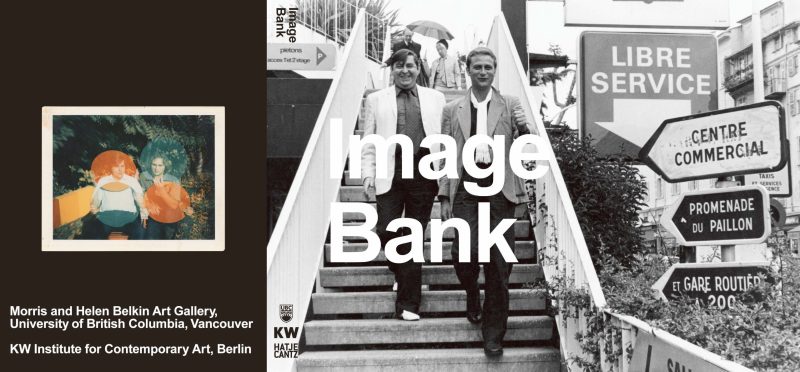 Image Bank explores the artistic collaboration of Michael Morris, Vincent Trasov and originally Gary Lee-Nova, including their most spectacular works – extended performances with props, such as Colour Bar Research (1970-78) and Mr. Peanut’s mayoralty campaign (1974) in which Vincent Trasov as Mr. Peanut ran for mayor of Vancouver – alongside their extensive mail-art exchanges with other networkers such as Robert Filliou, General Idea, Ant Farm and Ray Johnson’s New York Correspondence School. [more information and purchase]
Image Bank explores the artistic collaboration of Michael Morris, Vincent Trasov and originally Gary Lee-Nova, including their most spectacular works – extended performances with props, such as Colour Bar Research (1970-78) and Mr. Peanut’s mayoralty campaign (1974) in which Vincent Trasov as Mr. Peanut ran for mayor of Vancouver – alongside their extensive mail-art exchanges with other networkers such as Robert Filliou, General Idea, Ant Farm and Ray Johnson’s New York Correspondence School. [more information and purchase] -
Event
Sunday 20 Jun 2021, 11 am - 7 pm, on the odd hours
Outdoor Screen: Solstice Screening, Jumana Manna’s Wild Relatives
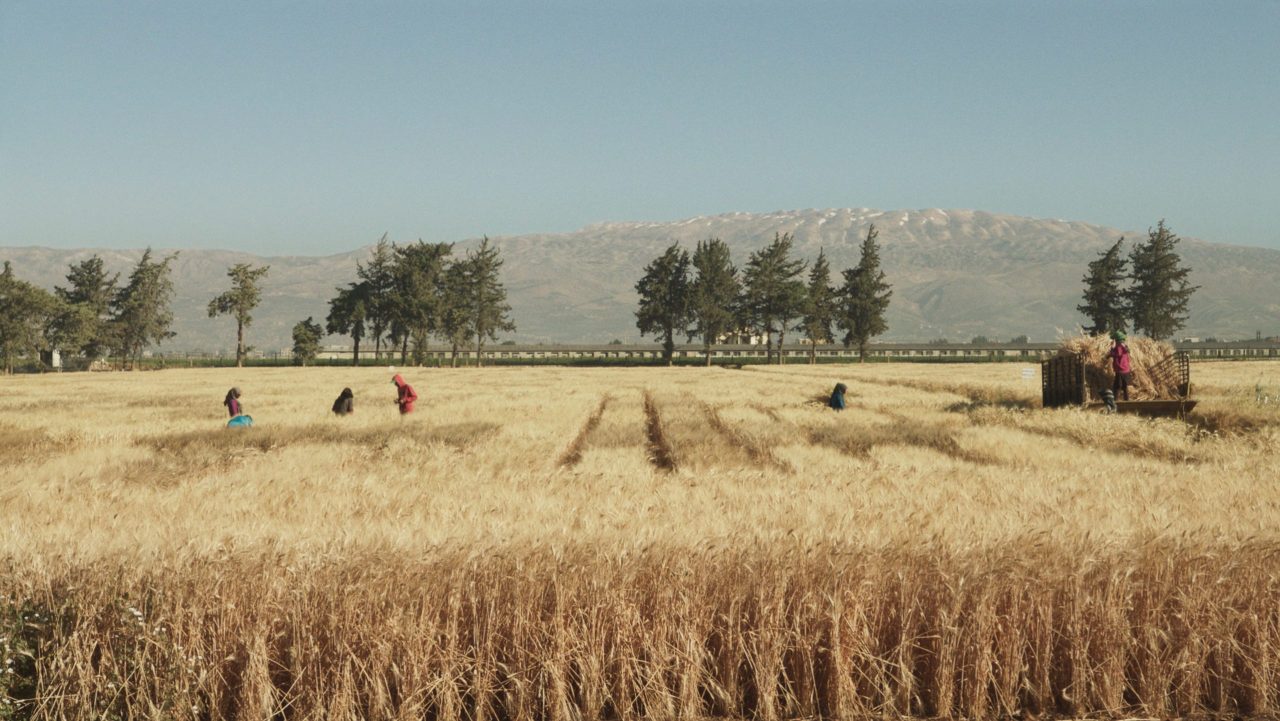
On Sunday, June 20, the summer solstice, we will project Jumana Manna’s film Wild Relatives (64 minutes, 2018) on the Belkin's Outdoor Screen located on the exterior of the gallery's wall along Main Mall, in a conversation across media with Holly Schmidt’s Fireweed Fields. The strange, spasmodic course of space and time in recent months has been mitigated by little other than the changes in seasons, the rhythms of nature, and the communal spaces offered by the outdoors. Seasonal and celestial markers such as that of the solstice bring this collective orientation upward and outward into marked relief. Wild Relatives will screen first at 11 am and then on each odd hour with the last screening at 7 pm.
[more] -
Exhibition
9 Sep – 5 Dec 2021
Outdoor Screen: Drift
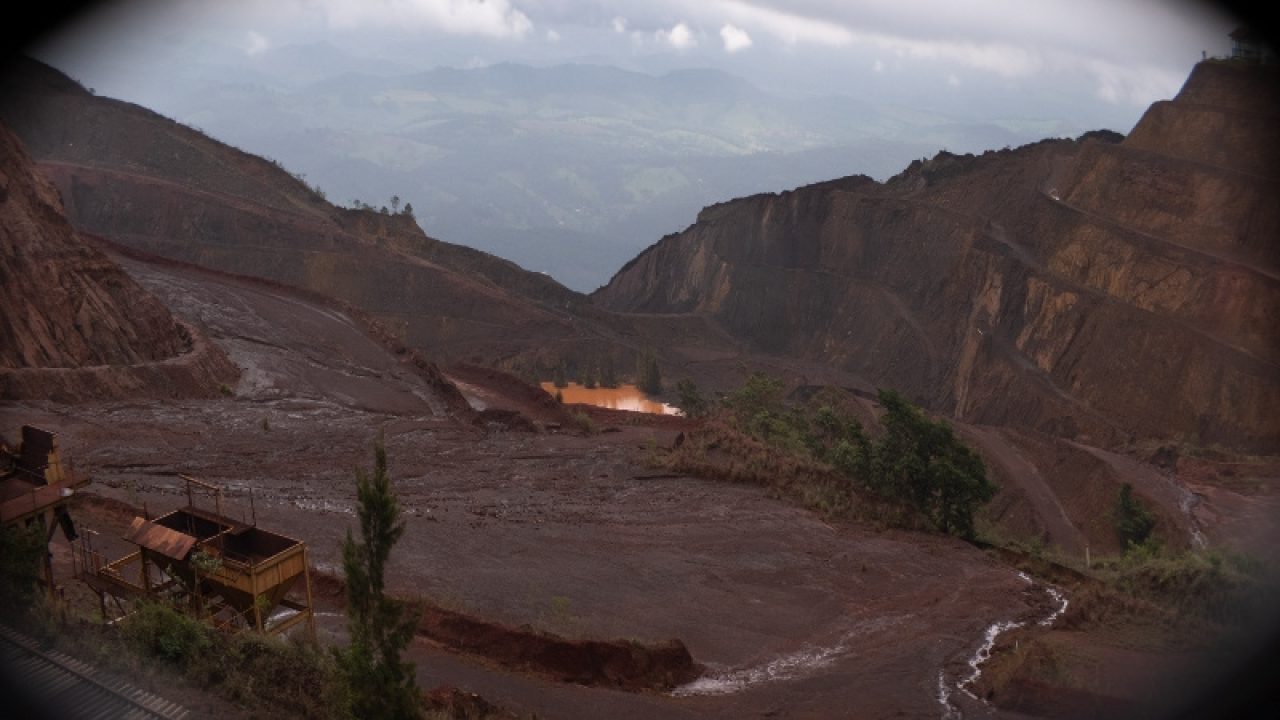
This fall, the Belkin's Outdoor Screen sets a number of works in relation to one another, drawing associations between the exhibition in the gallery, the longterm artist's residency in the Outdoor Art program and the affinities to be found with research partners on campus. Installed in the summer of 2021, the 4x2 metre digital screen extends the exhibitions and programs from inside the Belkin to the outside through video, sound and animation, supporting a more porous encounter for visitors. Transforming the grassy area in front of the gallery into an informal and flexible lounge space, with the boardwalk from Holly Schmidt's Fireweed Fields as a functioning viewing platform, the screen creates a space for engagement and conversation. Alongside curated works, the screen also highlights upcoming programs and events, and is often a site for facilitated conversations, class visits and workshops.
[more] -
News
14 Jun 2021
Outdoor Screen: An Extension of the Gallery
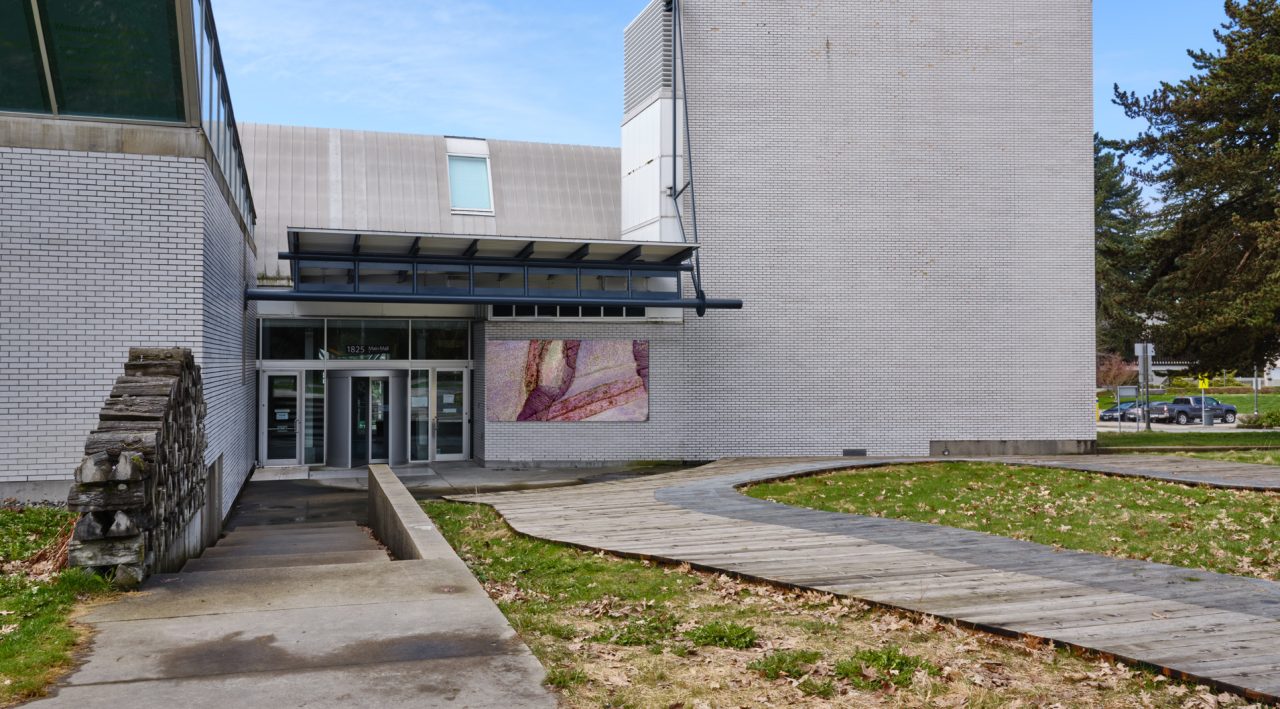
With the opening of the Image Bank exhibition on June 18, 2021, the gallery is pleased to launch the Outdoor Screen, a 4x2 metre outdoor screen curated with media works from the Belkin’s permanent collection and archive alongside work commissioned specifically for this platform.
[more] -
Event
18 Jun 2021
Curator Tour: Image Bank with Scott Watson
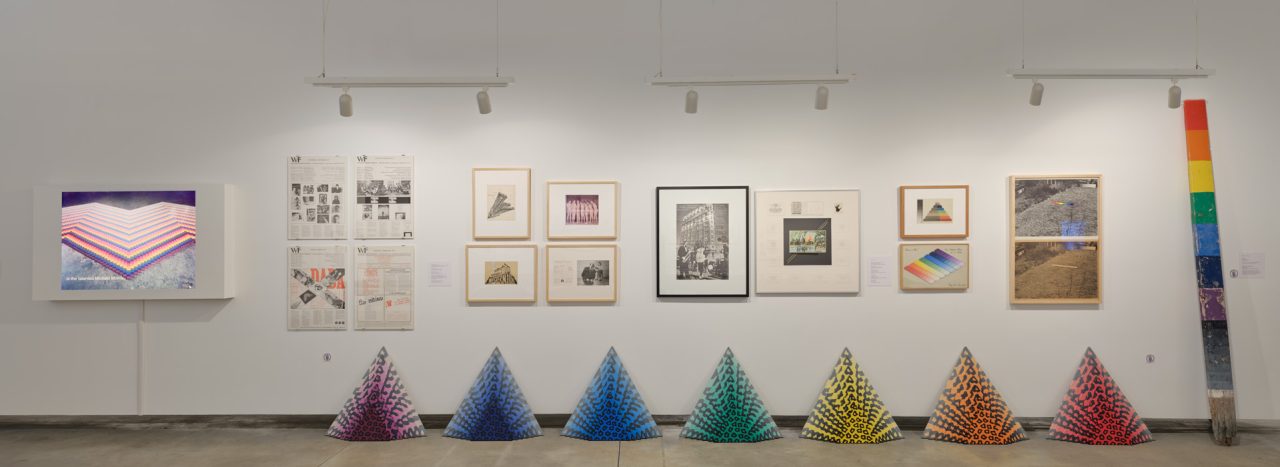
Image Bank explores the artistic collaboration of Michael Morris and Vincent Trasov with others, including their most spectacular works – extended performances with props, such as Colour Bar Research (1970-78) and Mr. Peanut’s mayoralty campaign (1974) – alongside their extensive mail-art exchanges with other networkers such as Robert Filliou, Ant Farm and Ray Johnson’s New York Correspondence School. Director and co-curator Scott Watson walks through the exhibition and offers insight into some of the key works and themes, including collaborations with the artists involved in the newly founded artist-run centre, the Western Front (est. 1973) (Martin Bartlett, Hank Bull, Kate Craig, General Idea, Gary Lee-Nova, Glenn Lewis, Eric Metcalfe, John Mitchell and others).
[more] -
Exhibition
18 Jun – 22 Aug 2021
Image Bank
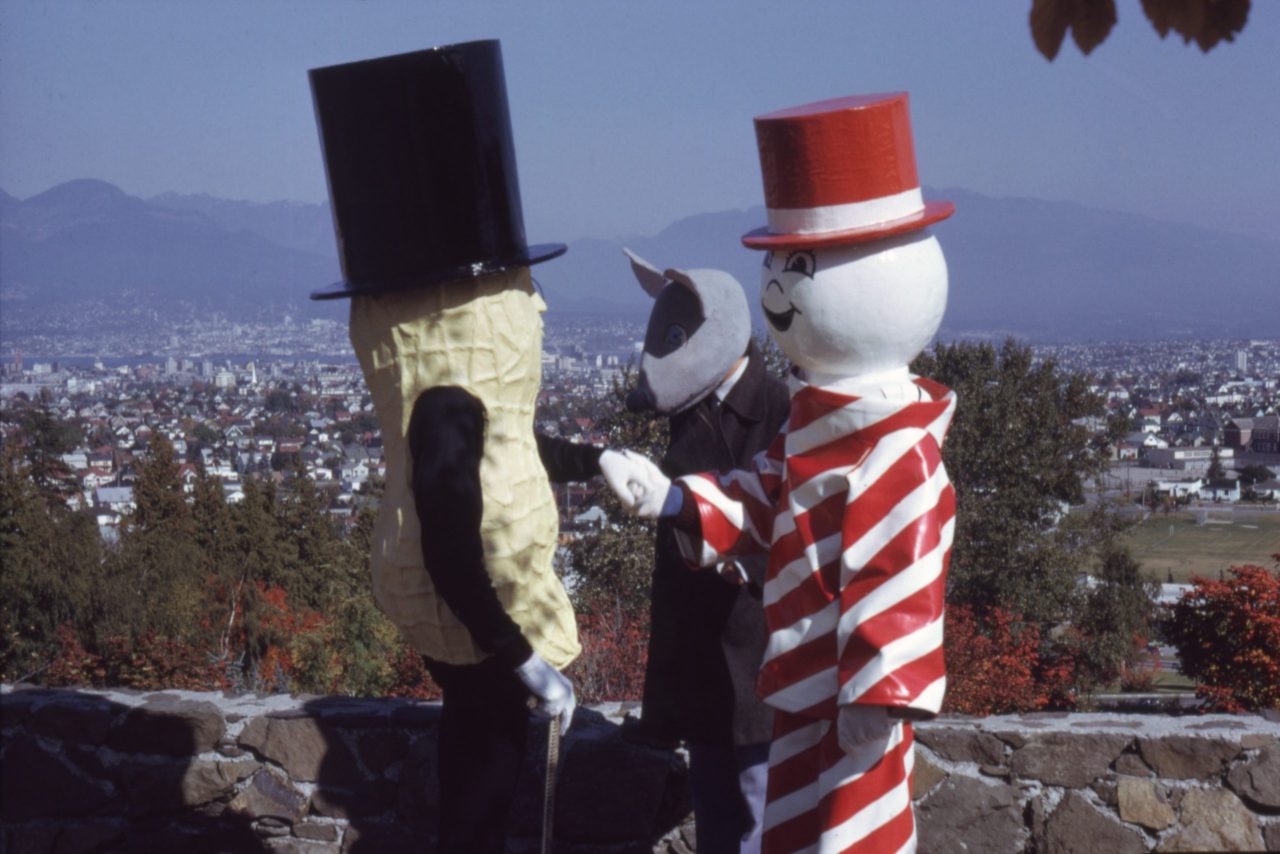
Image Bank explores the artistic collaboration of Michael Morris and Vincent Trasov with others, including their most spectacular works – extended performances with props, such as Colour Bar Research (1970-78) and Mr. Peanut’s mayoralty campaign (1974) – alongside their extensive mail-art exchanges with other networkers such as Robert Filliou, Ant Farm and Ray Johnson’s New York Correspondence School. The Peanut campaign, in which Vincent Trasov as Mr. Peanut ran for mayor of Vancouver, mobilized the artists associated with the newly founded artist-run centre, the Western Front (est. 1973) and the exhibition includes many collaborations with and amongst these artists (Martin Bartlett, Hank Bull, Kate Craig, General Idea, Gary Lee-Nova, Glenn Lewis, Eric Metcalfe, John Mitchell and others). The exhibition pulls films, photographs, drawings, collages and other ephemera from the Belkin’s Morris/Trasov Archive to track the collaborative history of Image Bank. Founded in 1970 and lasting to 1978, Image Bank was a project initiated by Michael Morris, Vincent Trasov and Gary Lee-Nova that originated when they were all associated with the legendary Vancouver artist-run centre Intermedia. The exhibition reflects on a period of optimism where artists envisioned a non-hierarchical alternative to the world of art galleries and museums, where images and ideas could be freely exchanged through the international postal system thereby creating an open-ended and decentralized method of networking that presages social media.
[more] -
News
17 Apr 2019
Image Bank at KW Institute, Berlin

This June 2019, a retrospective exhibition of the work of Image Bank opens at KW Institute in Berlin. Co-curated by the Belkin’s Scott Watson with Krist Gruijthuijsen and Maxine Kopsa, the exhibition pulls films, photographs, drawings, collages and other ephemera from the Gallery’s Morris/Trasov Archive to track the collaborative history of Image Bank. Founded in 1970 and lasting to 1978, Image Bank was a project initiated by Michael Morris, Vincent Trasov and Gary Lee-Nova that originated when they were all associated with the legendary Vancouver artist-run centre Intermedia. Image Bank produced a myriad of projects, including extended performances with props, such as Colour Bar Research, which involved 2,000 painted wooden bars that could be arranged into an ever-changing painting. Their most known performance is the Mr. Peanut for Mayor Campaign (1974) in which Vincent Trasov, as Mr. Peanut, ran for Mayor of Vancouver. This artistic collaboration and archive helped facilitate the exchange of ideas, images and information between artists through the use of the international postal system, thereby creating an open-ended and decentralized method of networking that presages social media.
[more] -
News
23 Aug 2021
Image Bank: Reframing the Picture
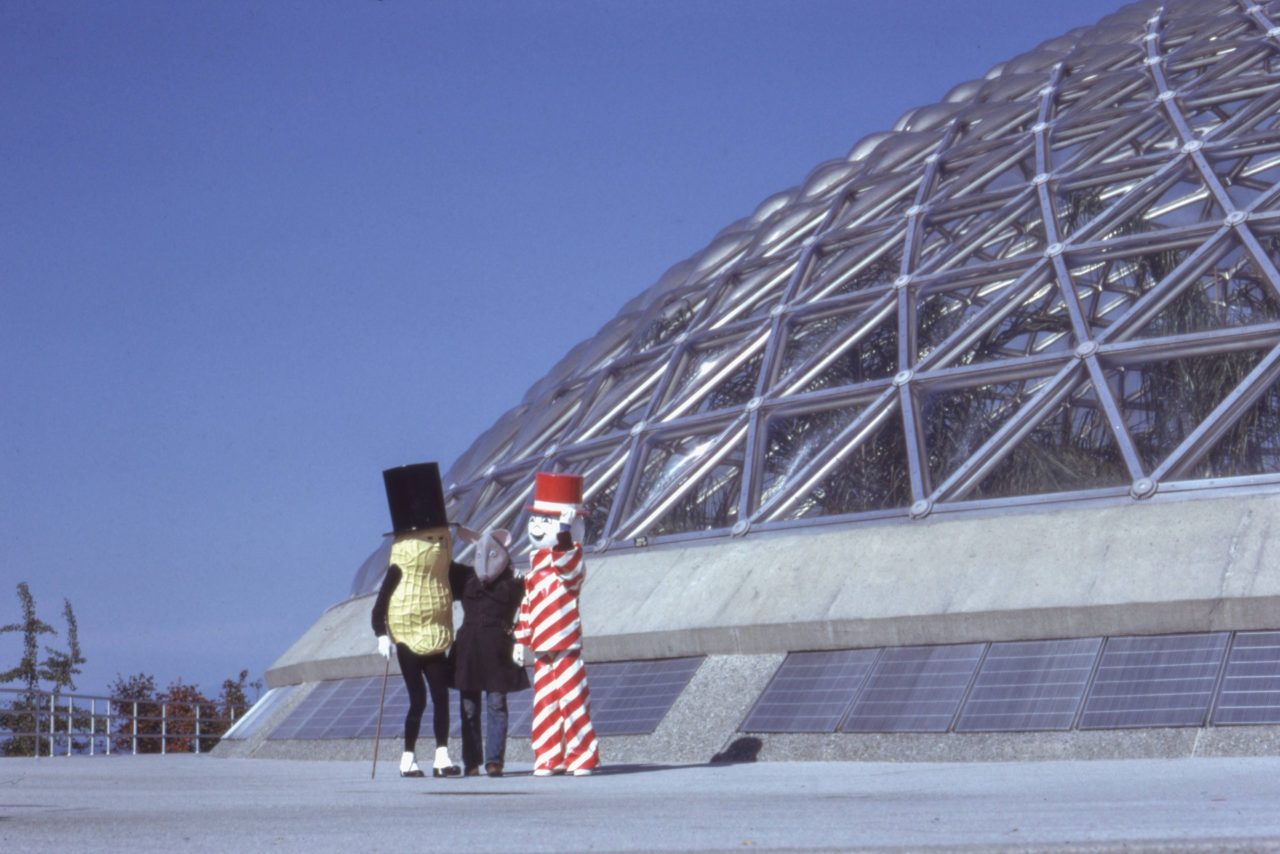 [more]
[more] -
News
17 Jun 2021
Image Bank: Reading Room

The following are resources related to the artists in Image Bank. This list is not exhaustive, but rather comprised of suggested readings compiled by researchers at the Belkin. These readings are intended to provide additional context for the exhibition and act as springboards for further research or questions stemming from the exhibition, artists and works involved. Following the introduction, resources are arranged by artist, listed alphabetically by last name. This compilation is an evolving and growing list, so check back in the future for more additions.
[more]